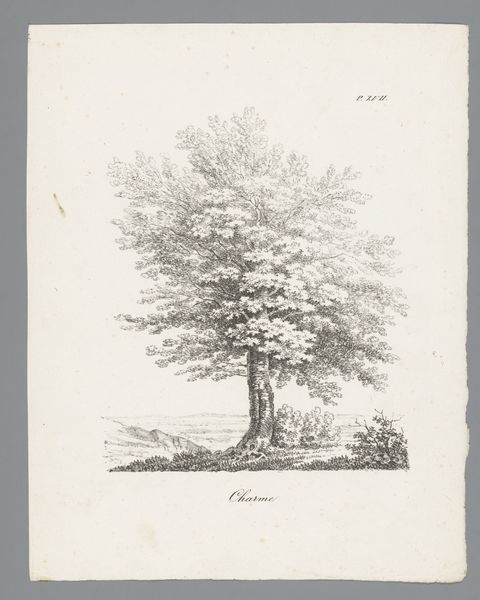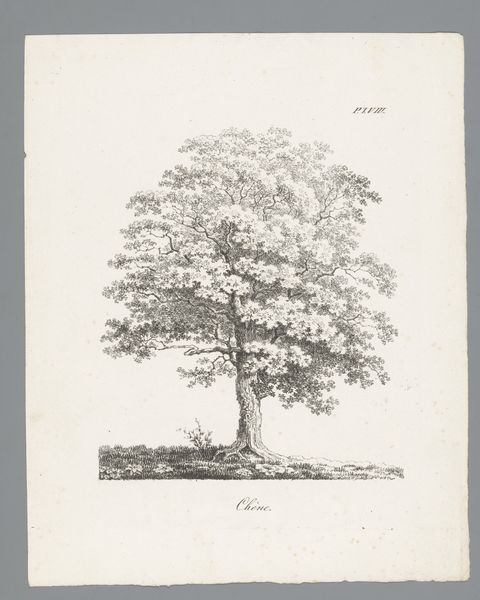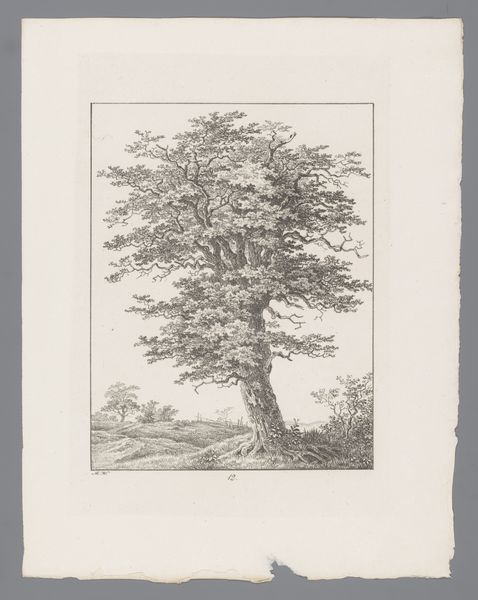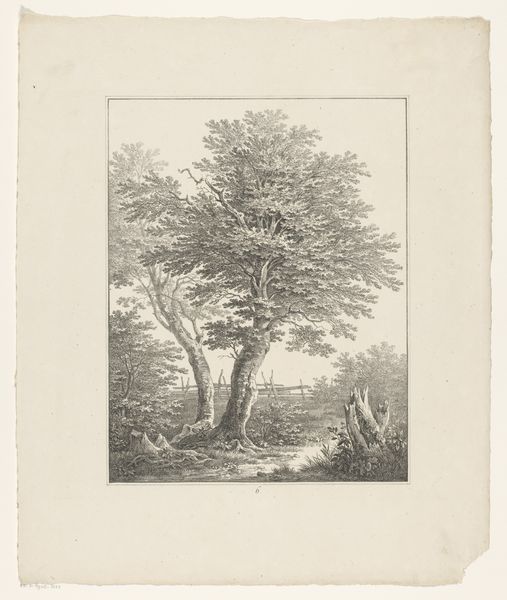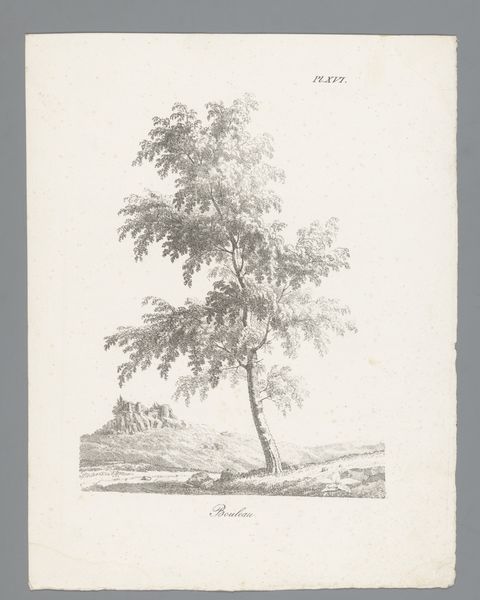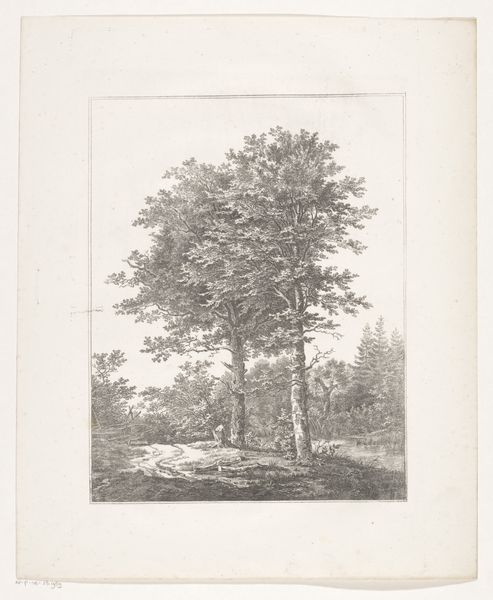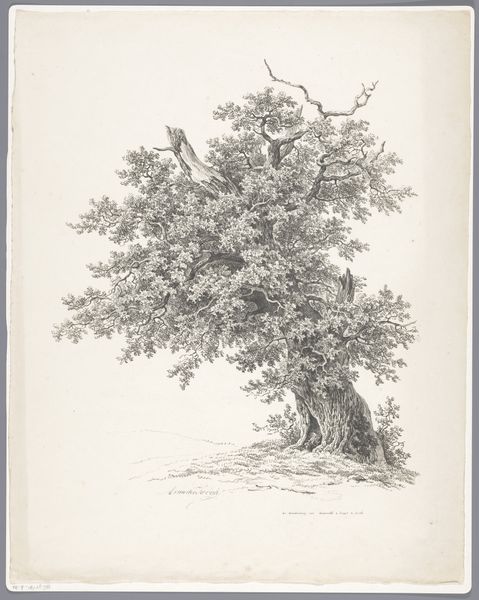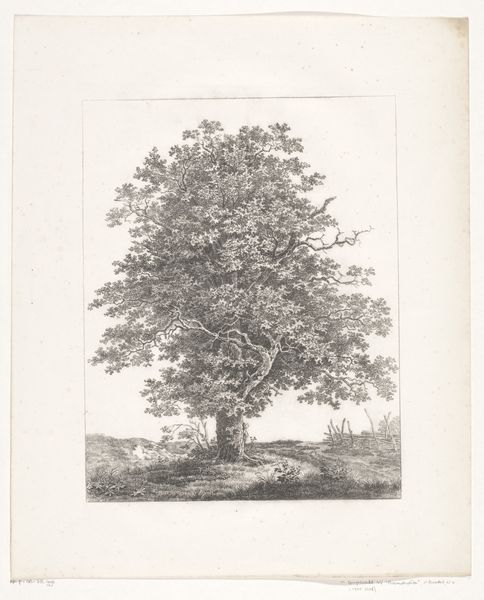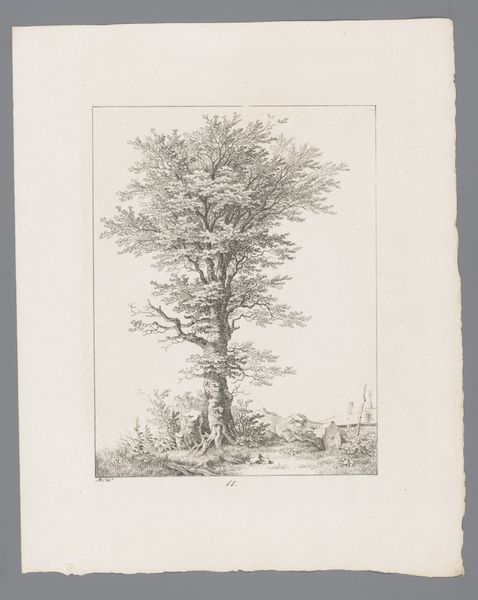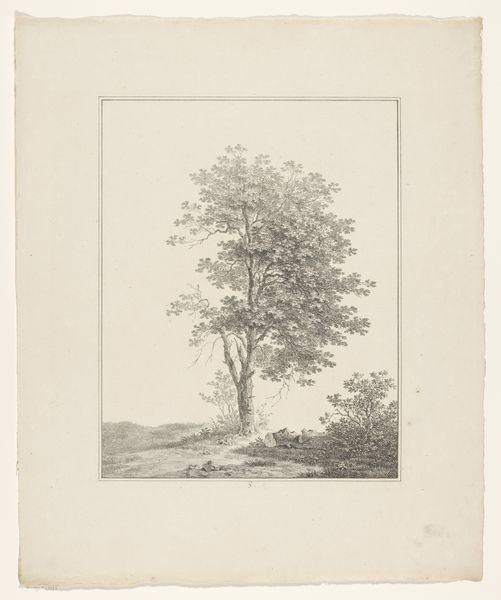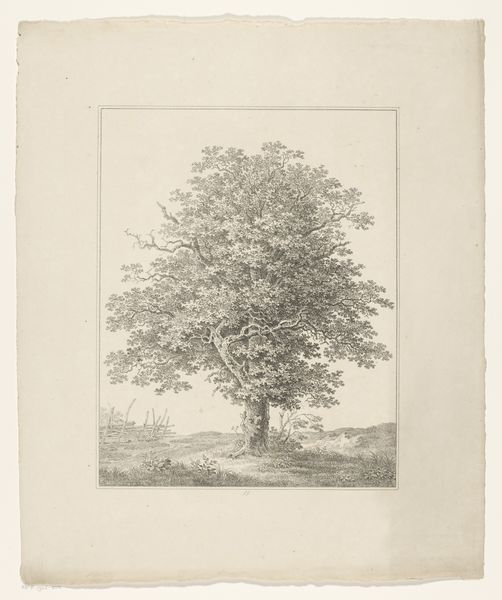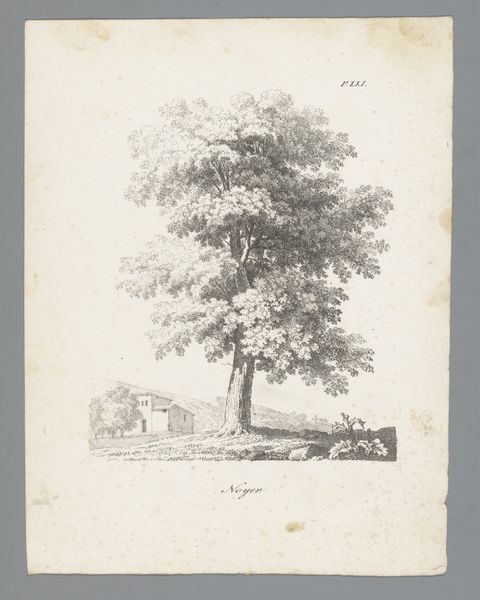
drawing, paper, ink
#
drawing
#
landscape
#
paper
#
ink
#
romanticism
Dimensions: height 306 mm, width 233 mm
Copyright: Rijks Museum: Open Domain
Editor: Here we have “Tamme kastanje,” or “Sweet Chestnut” in English, an ink drawing on paper by J. Bernard, dating back to around 1820 to 1835. The detail is striking for such delicate materials; I'm curious what resonates with you when you view this particular tree? Curator: Trees, for centuries, have stood as powerful symbols across cultures. Consider the Tree of Life, for instance. Looking at Bernard's chestnut, what do you see in its form? Its strong trunk bifurcates and then explodes in foliage; a symbol of resilience, growth, but also vulnerability perhaps? Editor: It does seem robust, yet there's a certain fragility in the delicate rendering of the leaves, like a lace curtain, ready to blow away with any wind. Is there a particular resonance with Romanticism's use of landscape? Curator: Precisely! Romanticism used nature to evoke profound emotions and a sense of awe. Look at the barely-there mountains behind, or the bridge… almost Romanesque. The chestnut tree isn’t just a botanical study; it represents a powerful connection between humanity, history and the sublime force of nature itself. A reminder of time's passage and the enduring strength found in the natural world. The very subtle symbolism almost prefigures environmental consciousness! Editor: It’s fascinating to consider it as an early environmental symbol. I never thought a simple drawing could contain so many layers. Curator: Indeed. The power of images, even seemingly simple ones, lies in their ability to speak to our shared cultural memory. It’s not *just* a chestnut tree, is it? Editor: Not at all, I'll remember that. Thank you for sharing that unique point of view with me.
Comments
No comments
Be the first to comment and join the conversation on the ultimate creative platform.

